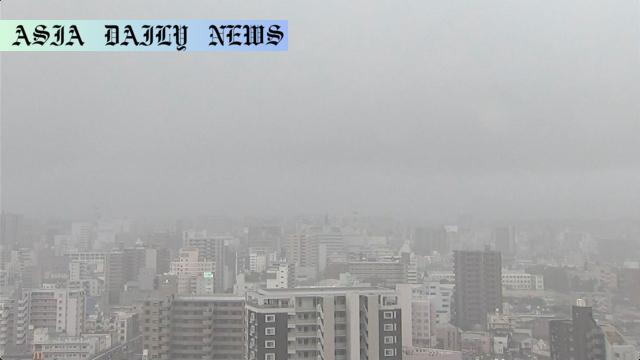Weather – Torrential rains, high temperatures, and Tropical Storm Nari pose significant risks across Japan in the coming days.
Tropical depression in Kyushu expected to bring torrential rain.
Tropical Storm Nari approaches eastern and northern Japan.
High temperatures in many cities; heatstroke alerts issued.
Weather officials warn of landslides, floods, and strong winds.

Heavy Rains Threaten Western Japan and Kyushu
As a tropical depression advances toward the Kyushu region in southwestern Japan, significant rainfall is anticipated. The Japan Meteorological Agency (JMA) has issued warnings, projecting heavy rains and thunderstorms in southern Kyushu and the Amami region of Kagoshima Prefecture. These conditions are expected to intensify on Sunday and extend into Monday. The combination of warm, moist air and unstable atmospheric conditions bolsters the strength of the rainclouds, increasing the risk of landslides, flooding in low-lying areas, and rivers swelling to dangerous levels.
Communities in western Japan are urged to stay vigilant and prepared for possible emergencies. Authorities recommend avoiding risky activities near rivers and slopes, as rainfall may lead to unforeseeable ground instability overnight.
Soaring Temperatures and Health Risks
While heavy rains are pounding certain areas, soaring heat is afflicting others. Several cities in western Japan, including Osaka, Fukuoka, and Hiroshima, are reporting daytime highs of 35 degrees Celsius or more. Osaka City is expected to record a sweltering 37 degrees Celsius, while Kyoto, Takamatsu, and several others will see highs exceeding 36 degrees Celsius. These extreme temperatures have prompted heatstroke alerts across multiple prefectures in western and southwestern Japan.
Health officials are strongly advising residents to stay hydrated and limit outdoor activities during peak heat hours. Indoor cooling measures and checking on vulnerable populations, such as the elderly and young children, are crucial steps to mitigate heat-related illnesses.
Tropical Storm Nari’s Looming Threat
Tropical Storm Nari, formed early Sunday, is approaching Japan’s Ogasawara Islands. As of Sunday noon, the storm was located 100 kilometers east-southeast of Chichijima Island, moving north-northeast at 20 kilometers per hour. With a central atmospheric pressure of 994 hectopascals and winds up to 72 kilometers per hour near its center, Nari’s impacts are already being felt.
Projected to strengthen as it approaches eastern and northern Japan on Monday, Nari will bring torrential rain, thunderstorms, and high waves to the Kanto region, including Tokyo, and extend to the Tohoku region. The JMA emphasizes caution for risks such as landslides, flooding, and high winds. Additionally, lightning strikes and gusting winds pose added hazards in affected areas.
Emergency Preparedness and Safety Measures
Weather experts strongly encourage all residents in affected areas to stay informed through official updates and alerts. Preparing emergency kits, securing loose outdoor items, and having evacuation plans in place are critical steps during severe weather conditions. Ensuring mobile devices are charged and equipped with emergency contact numbers remains essential.
Authorities continue to issue travel advisories for those planning trips to or through the affected regions. Travelers are advised to monitor schedules and be prepared for possible disruptions. Remember, acting with caution and vigilance can save lives in these extreme circumstances.
Commentary
Reflections on Nature’s Unpredictability
The recent weather developments in Japan showcase yet again how volatile and unpredictable nature can be. From torrential rain and the threat of floods to blistering temperatures that pose severe health risks, these events force us to reevaluate how we prepare and respond to weather emergencies. The tropical depression in the Kyushu region coupled with Tropical Storm Nari highlights the interconnectedness of weather systems and their potential to disrupt lives across vast areas.
Importance of Preparedness and Awareness
What strikes me most about this situation is the dual threat—heavy rainfall in some regions and extreme heat in others. This juxtaposition of challenges presents logistical and safety issues for residents and governments alike. It underscores the importance of staying informed through reliable sources like the Japan Meteorological Agency. Preparation isn’t just personal; it’s a collective effort where community support can make all the difference, especially for those who are more vulnerable, such as the elderly or the sick.
A Wake-Up Call for Global Communities
Japan’s ongoing weather challenges are a reminder of how climate-related events can escalate unexpectedly. It also serves as a wake-up call for societies across the globe to prioritize infrastructure improvements, sustainable practices, and climate education to better handle the increasing prevalence of extreme weather. In this increasingly interconnected world, lessons learned in one nation can be valuable blueprints for others.
Ultimately, I hope for a swift recovery and minimal impact on the affected regions in Japan. Nature is powerful, but proactive measures and resilience can help mitigate its harshest effects.


